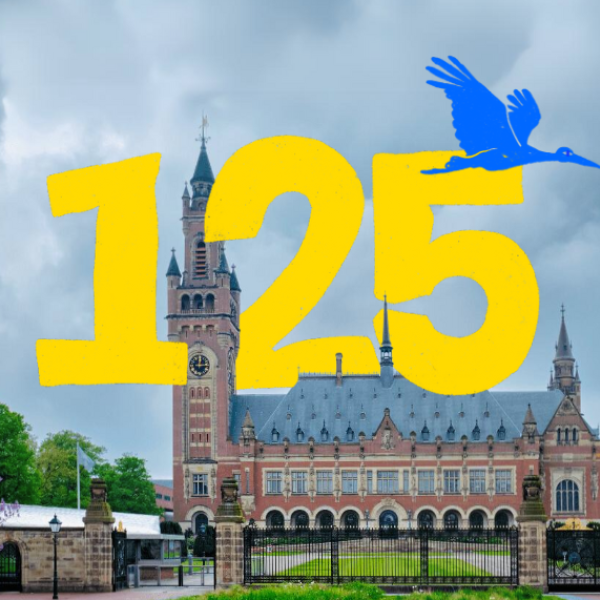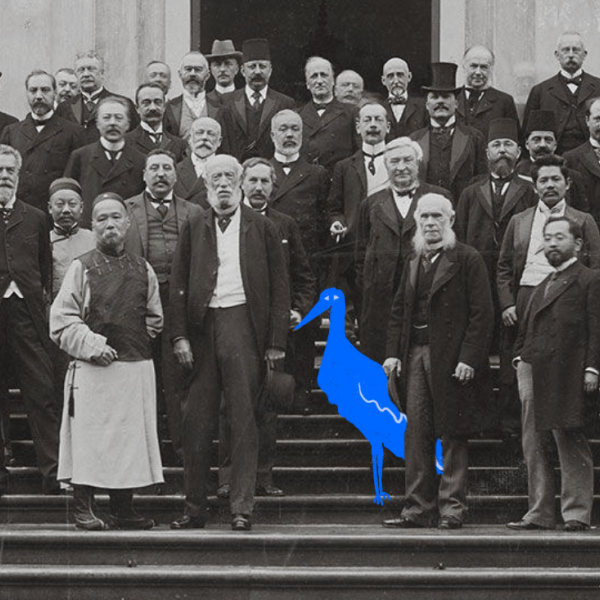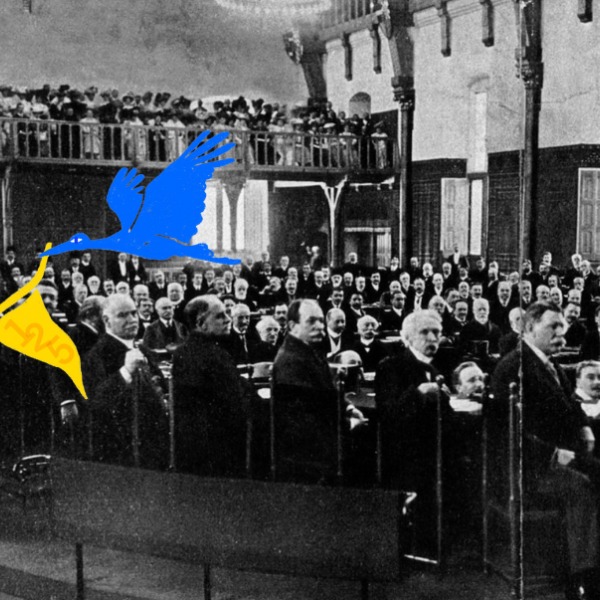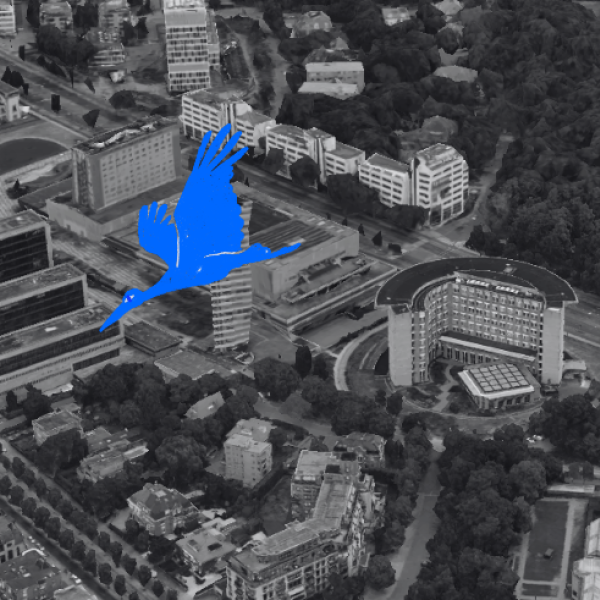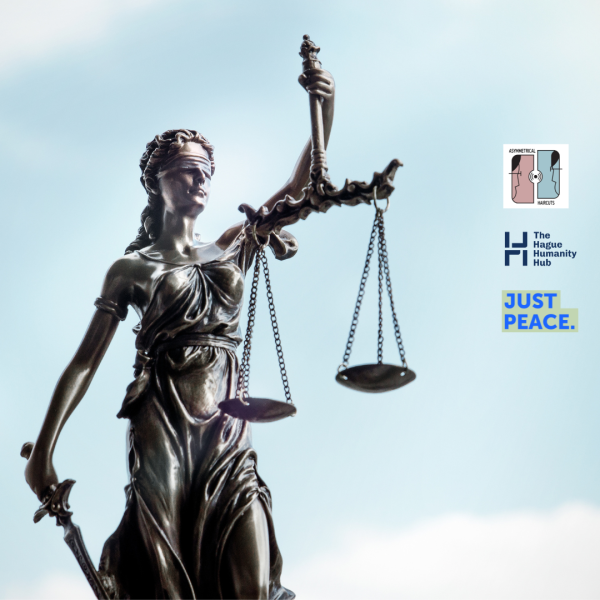A history of the First Hague Peace Conference
In a city where people of more than 180 nationalities congregate and live, and where nearly 500 international organizations are based today, it is pretty self-evident that The Hague bears the title of Peace and Law. But how did it come to be so? And to what does the city owe its well-deserved title. In eight short stories Just Peace (in cooperation with the municipality of The Hague) takes you through the history, present and future of the City of Peace and Justice.
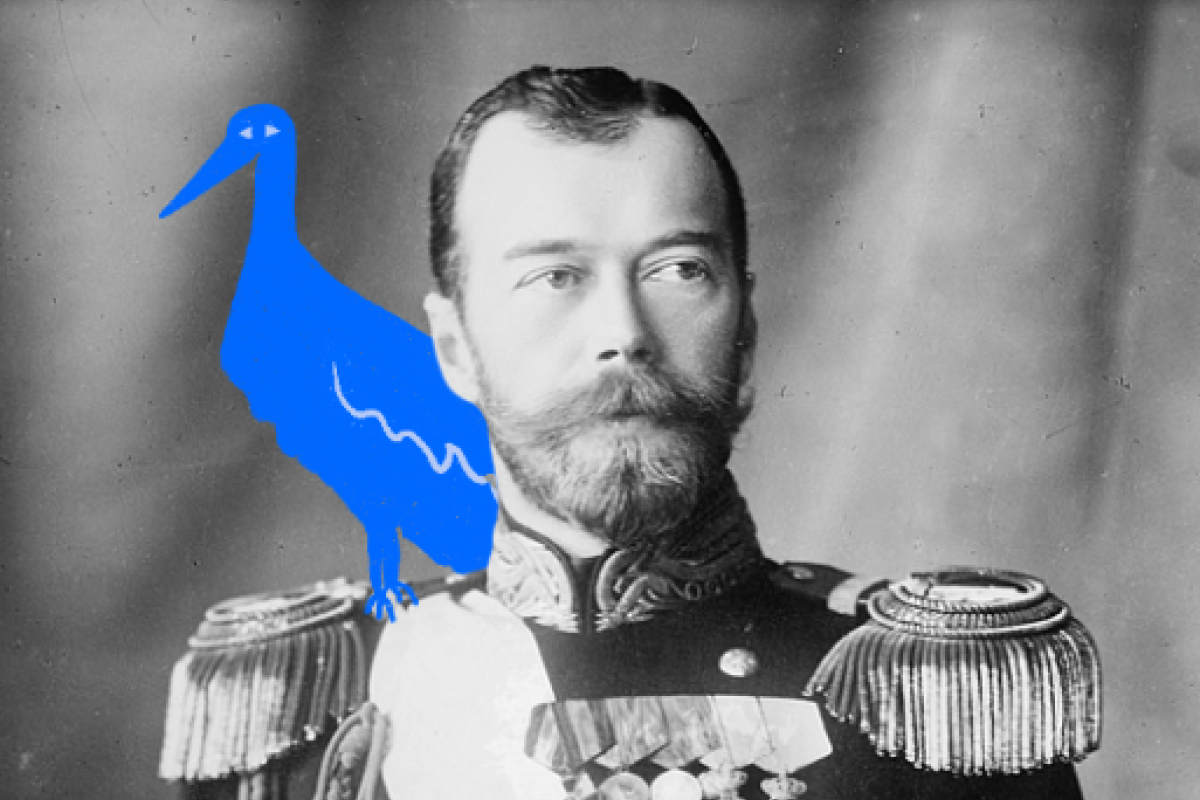
City of Peace and Justice
The Hague came to this name as result of its more than 125 Years of history as a hub for Peace and Justice organizations and activities. The city's importance to international peace and justice dates back to the 16th century. In 1625, Hugo de Groot, considered the founder of international law, wrote the book The Law of War and Peace. The book laid the foundation for today's International Court of Justice in The Hague. But the Netherlands was also known for notorious humanists and jurists such as Erasmus, Grotius and Van Bynckershoek. Moreover, the Hague as a city was already an experienced host, with the 1893 and 1894 conferences of the Inter-Parliamentary Union and the Hague Conference on Private International Law having taken place in the city.
Russian Tsar with a vision
After the Napoleonic Wars in the 19th century, the most powerful countries in Europe began a race to accumulate as many weapons as possible. This was largely due to the industrial revolution, which made making that making weapons much easier and faster. The result was that there were many bloody wars, not only in Europe but also in America, Africa and Asia. These wars caused people a lot of grief and pain, and it also cost a lot of money to fight them.
Because of this, at the end of the 19th century, more and more peace movements arose. Important persons in this space were the British journalist William Stead and peace activist Bertha von Suttner. Organizations were also founded, such as the Red Cross, which drew up protocols by which civilians and prisoners of war were henceforth to be protected.


It was ultimately on the initiative of Russian Czar Nicholas II that the Hague Peace Conference got off the ground in 1899. Nonetheless when the czar proposed the idea to the ministers in the weekly reception at the Foreign Ministry in St. Petersburg, it was received with skepticism. This was because Russia was one of many European countries that were building their military power at the time.
But ultimately, Tsar Nicholas II didn't let himself just be shown the door and he send a message to the leaders of several countries. In that message, he suggested that they organize a conference where they could discuss how, from now on, conflicts between countries could be resolved without war. He also wanted them to think of ways to promote peace. The former skepticism of the Russian ministers had been put to rest with the overwhelming positive response from the U.S. and the First Peace Conference became a reality!
Many countries welcomed the proposal and saw it as a good opportunity to achieve peace. They were enthusiastic about the idea of international mediation to prevent future conflicts. But other countries were also reluctant to participate and had reservations about the Tsar's initiative. They were concerned that the proposal might harm national interests or that it would be difficult to arrive at concrete measures during the conference.
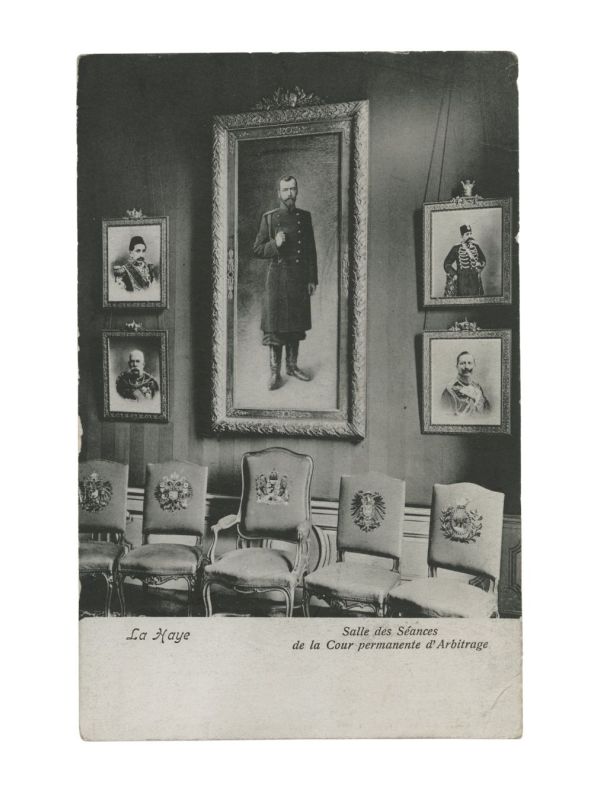
Countries were eager about the idea of international mediation to prevent future conflicts
The peace conference was to be held in a neutral location in Europe. Cities such as Copenhagen, Bern, Brussels and The Hague were all considered but in the end, The Hague was chosen. Conclusive were the city's central location within Europe and therefore the accessibility by boat or train. In addition, the Netherlands was known for its tradition of hospitality and diplomacy. The country offered a stable and safe environment for international meetings and was willing to provide what was needed to host such a conference. There were also family ties between Russian and Dutch courts. The young Queen Wilhelmina offered her summer palace Huis ten Bosch in the Hague Forest as a venue for the conference. Meetings were held there in the Orange Hall for three months.
Between May 18 and July 29, 1899, 26 countries (of the 59 countries then claiming sovereignty, or having their own governments) met in The Hague. The Hague Peace Conference was unique because, for the first time, peace was discussed at a time when there was no war. No band-aids but work on the core, that was the idea. During the three-month period, diplomats and jurists from all over the world met with each other. Although no agreement was reached at this first conference, it laid the groundwork for the establishment of the Permanent Court of Arbitration in 1913. And we celebrate that this year with the 125th anniversary of this first conference and the establishment of The Hague as an international city of Peace and Law.
Want to learn more about The Hague's history as the International City of Peace and Justice? Follow this series directly on the Just Peace website or on our Instagram @justpeacethehague. Next edition, find out who was present at the first peace conference!

